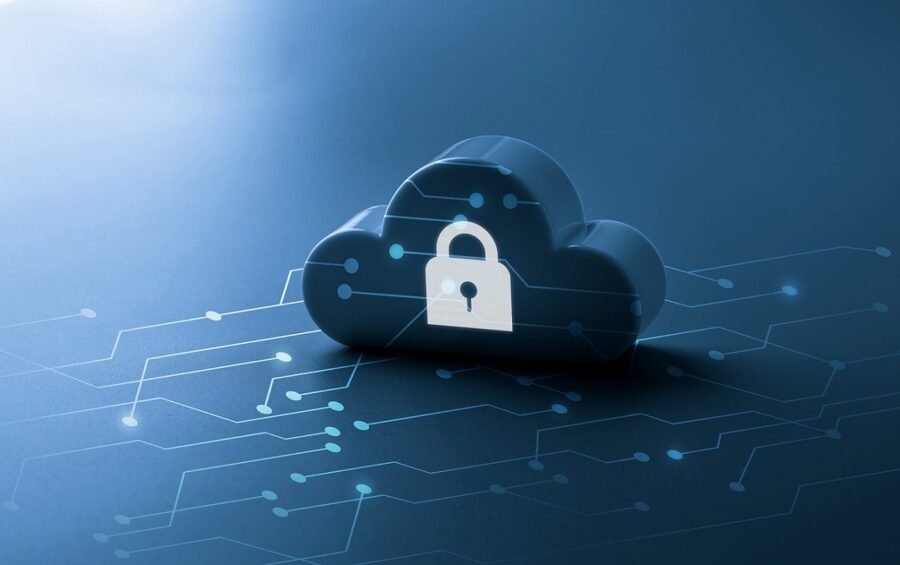
In this digital age, businesses are all about convenience and ease of use. What could be more convenient than cloud computing? With its favorable cost structures and ease of access, it’s no wonder many have flocked to it. But in a rush to embrace this shiny new tech, many forgot the security fundamentals.
It’s a dangerous game, this out-of-sight, out-of-mind mentality. The more we loosen our grip on asset control, the more vulnerable we become. Predators are always watching, waiting for the right moment to strike. The cloud may be beautiful, but it’s not without risks.
Beware of the lurking dangers that threaten your IT assets in the cloud. Stay ahead and ensure your organization’s utmost level of cloud data security.
What are the risks related to cloud security?
One wrong move, one slip-up, and the integrity of sensitive business data can get shattered. Businesses must be vigilant and stay ever-watchful against these cloud security risks:
- Data Breaches. Sensitive data is left vulnerable to exploitation when security measures are lacking. The negligence of those entrusted with the safety of IT assets can lead to data breaches.
- Data loss. Cloud providers must have backup and recovery mechanisms to prevent data loss. It poses a grave threat, whether it’s due to system failures or natural disasters.
- Insecure interfaces. These vulnerabilities stem from poor authentication and authorization mechanisms or inadequate encryption. Insecure interfaces open the door to attackers who seek to access sensitive data.
- Insider threats. In 2022, 31% of CISOs listed insider threats as a significant cybersecurity risk. Cloud providers must take a proactive stance by implementing strict access controls. They should also monitor user activity to detect and prevent insider threats.
- Regulatory compliance. Regulations set forth by GDPR, CPRA, and HIPAA are not to be taken lightly. They are the guardians of our digital privacy, the watchmen at the gates of our most sensitive information. Failure to comply with these regulations can have dire consequences.
- Transparency. Cloud providers must be transparent about security practices and data handling procedures. Without this, customers may find risk assessment of a particular cloud provider challenging.
- Multi-tenancy. When multiple customers share the same resources, the risk of data compromise increases. Cloud providers must implement measures to isolate customer data from other customers.
- Denial-of-service attacks. DDoS can disrupt service and prevent customers from accessing their data. Clmechanisms to detect and mitigate these attacks.
- Cloud sprawl. This problem is like cancer that spreads through an organization. They create redundant and unnecessary cloud resources. Establish policies, use monitoring tools, and conduct regular audits to regain control.
- Evolving Threat Landscape. Cloud environments are repositories for our most valuable data. They are prime targets for malicious actors. Organizations must remain vigilant and regularly update their security protocols. Ongoing training is crucial for equipping staff with the skills to combat emerging threats.
How do you ensure data security in cloud computing?
Now, it’s not all doom and gloom in the cloud. There are plenty of ways to ensure your data stays safe and secure. You can use these tools and best practices for a multi-layered approach to security:
Enterprise Password Managers
Password managers stand guard over login credentials, keeping them safe and secure in a centralized location. They enforce password policies, track password usage, and ensure users are not sharing passwords.
Password managers create complex passwords that will leave intruders scratching their heads. It reduces the likelihood of password-related security breaches, including brute-force attacks.
Identity and Access Management (IAM)
IAM solutions create a fortress of security where sensitive data, applications, and systems are protected from prying eyes. They create a secure and controlled environment for managing user authentication and authorization. They ensure that only authorized personnel can access sensitive data, applications, and systems.
IAM wields the power of MFA, role-based access control, and user activity monitoring. They can be the gatekeepers of your cloud-based kingdom, keeping intruders out.
Encryption
Cloud computing endangers data as it transmits and stores it across the internet. One way to secure data confidentiality and protect against theft is through encryption. It safeguards data at rest and in transit.
Moreover, compliance regulations that demand the protection of sensitive information mandate encryption. By implementing encryption, businesses can abide by these regulations. Companies evade penalties and preserve their reputation.
Virtual Private Networks (VPNs)
With security that would make Fort Knox jealous, VPNs keep your connections safe. They ensure data transmitted is protected from interception and unauthorized access.
VPN apps have become an essential part of this era of remote work and virtual collaboration. It provides a layer of security in the face of the most vicious cyber criminals.
Security Information and Event Management (SIEM)
SIEM solutions are like 24-hour guards of the digital world. They monitor every user activity and detect security threats in real time.
With SIEM, you can rest easy knowing security experts are watching your back around the clock. If any threats rear their ugly heads, SIEM allows your security teams to respond fast. These solutions are like a well-oiled machine that prevents data loss or theft.
Data Backup and Disaster Recovery
With data backup and disaster recovery plans, you ensure business operations will continue. These plans guarantee business continuity, especially during data loss or system failure.
Compliance and Risk Management
Compliance and risk management are critical in ensuring the security of cloud services. Cloud providers must implement them to meet clients’ demands and maintain users’ trust.
Cloud computing is a smart business choice due to its flexibility and cost-effectiveness. But, with its increased usage, there’s a growing concern about data security. We must look at these tools and best practices to ensure data security in cloud computing.
